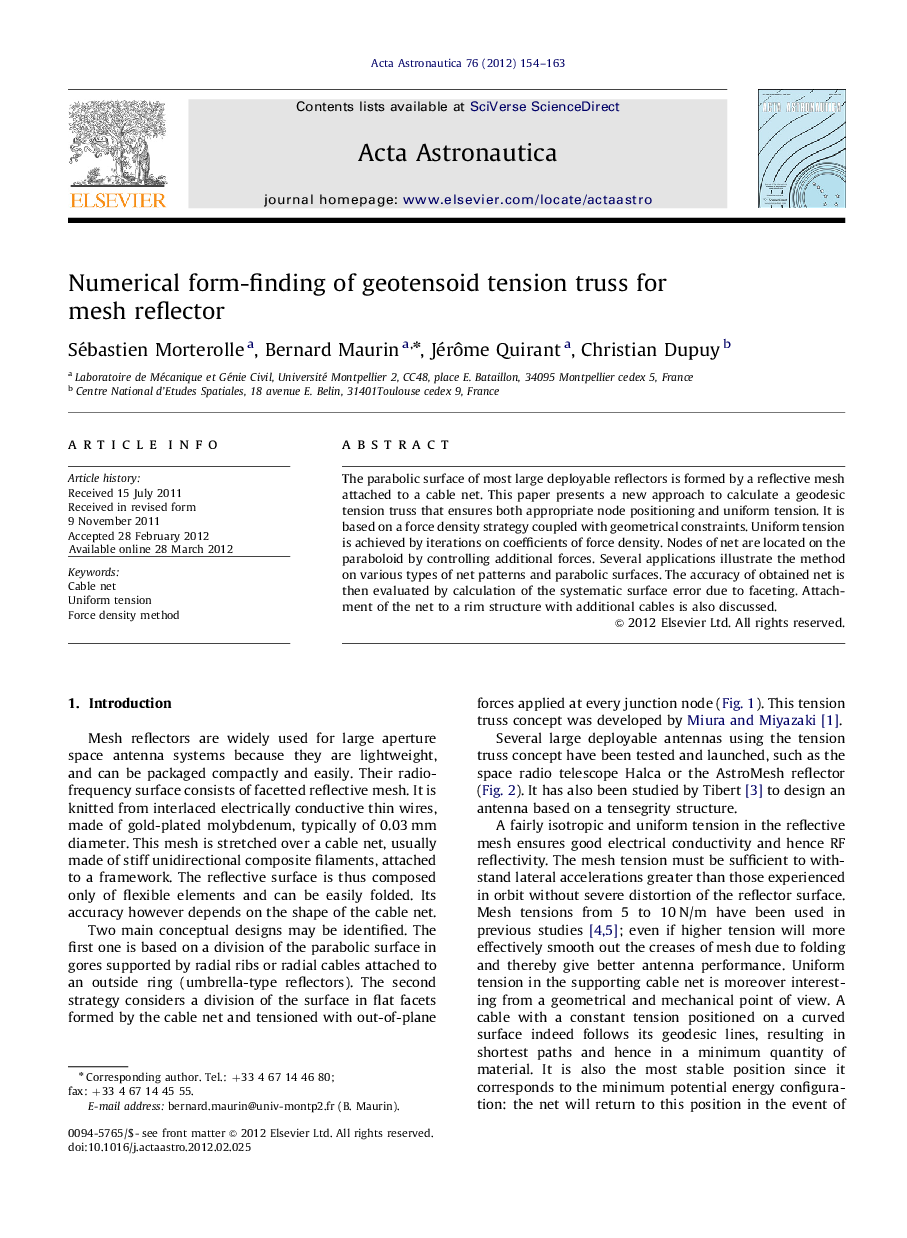| Article ID | Journal | Published Year | Pages | File Type |
|---|---|---|---|---|
| 1715336 | Acta Astronautica | 2012 | 10 Pages |
The parabolic surface of most large deployable reflectors is formed by a reflective mesh attached to a cable net. This paper presents a new approach to calculate a geodesic tension truss that ensures both appropriate node positioning and uniform tension. It is based on a force density strategy coupled with geometrical constraints. Uniform tension is achieved by iterations on coefficients of force density. Nodes of net are located on the paraboloid by controlling additional forces. Several applications illustrate the method on various types of net patterns and parabolic surfaces. The accuracy of obtained net is then evaluated by calculation of the systematic surface error due to faceting. Attachment of the net to a rim structure with additional cables is also discussed.
► LDR parabolic surface is formed by a reflective mesh attached to a cable net. ► We propose a new method to calculate the form of the tension truss. ► It ensures uniform tension and exact node positioning (“geotensoid” configuration). ► Applications on axi-symetric and offset antennas show the efficiency of the approach.
